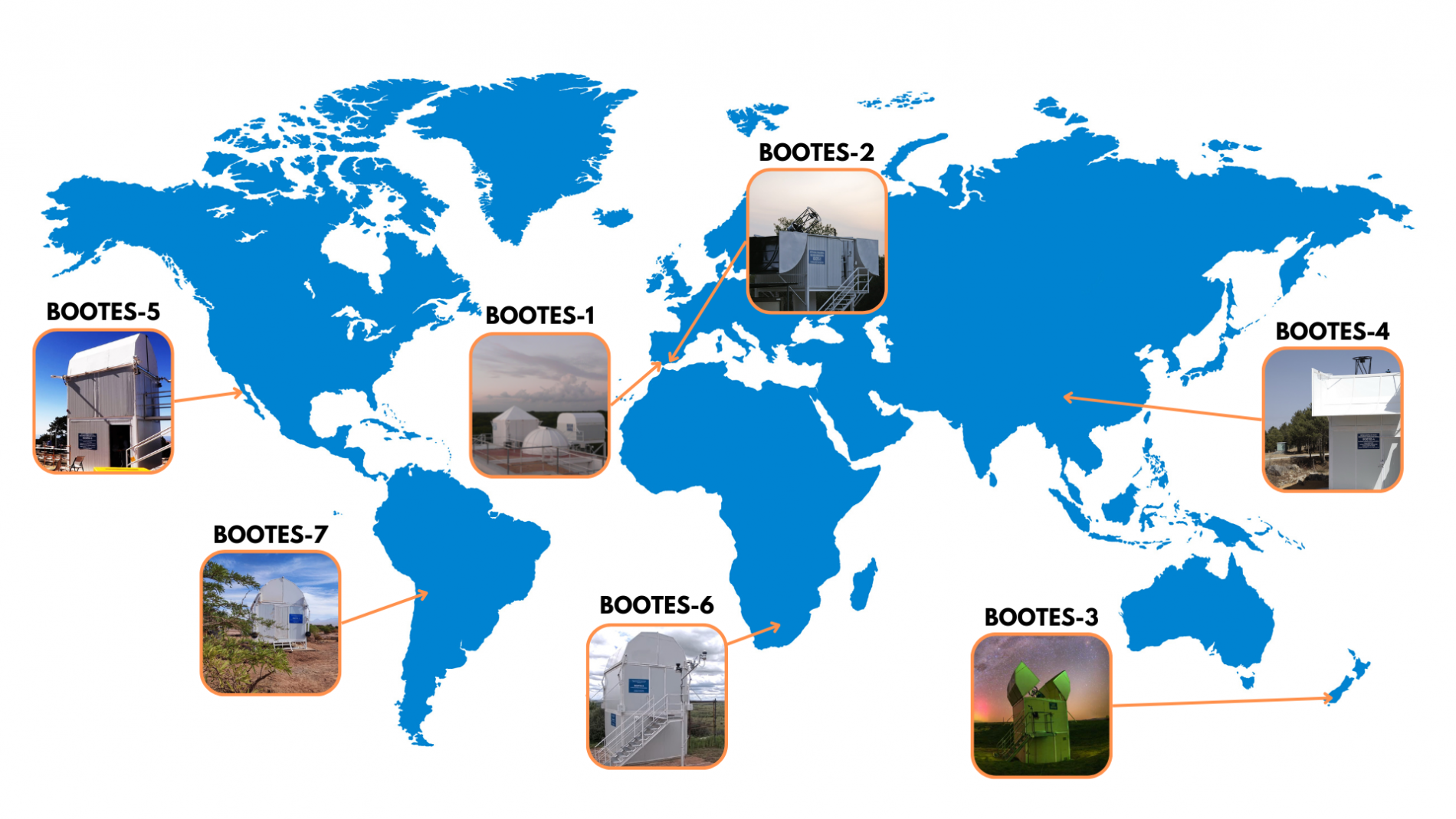The IAA-CSIC completes the first network of robotic telescopes present on the five continents
Spain becomes the first country in the world to lead a global network of autonomous observatories. The BOOTES network, with seven facilities, is a pioneer in space surveillance and the study of transient cosmic phenomena, which shine briefly, intensely and suddenly.
The Institute of Astrophysics of Andalucía (IAA) of the State Agency Spanish Research Council (CSIC) has finished the deployment of the BOOTES Network (Burst Observer and Optical Transient Exploring System), the first network of robotic telescopes with stations on five continents. With installations in Spain (two stations), New Zealand, China, Mexico, South Africa and Chile, it constitutes the most complete network of its kind and a unique and fully automated resource for combining data from instruments around the world, monitoring the sky and supporting observations from missions and satellites.
“BOOTES is the result of almost twenty-five years of continuous effort, since we installed the first station in 1998 at INTA (Arenosillo, Huelva), the institution that initially supported the project. The complete deployment represents a scientific milestone since it is the first robotic network with a presence on all continents", according to Alberto J. Castro-Tirado, scientist at IAA-CSIC acting as Principal Investigator since the very beginning. This is ahead of the American project, whose Asian station is under construction, and the Russian one, which is lacking an installation in Oceania.
The BOOTES network is managed by the IAA-CSIC, with strong involvement of the University of Malaga and in collaboration with other Spanish and international institutions. Its main objective is to quickly and autonomously observe what are known as transient sources, astrophysical objects that do not present a permanent emission over time, but rather emit light briefly, intensely and suddenly. The detection of these events is usually done from satellite, and BOOTES provides an automated response in real time that allows their characterization.
The network will contribute to the study of gamma-ray bursts, which are the most energetic events in the universe and are associated with the death of very massive stars. Its detection usually occurs through satellites, which inform the scientific community of the outbreak so that the event can be studied in detail. The existence of a network of very fast pointing robotic telescopes such as BOOTES represents an ideal complement to satellite detection and, in fact, BOOTES will also work to track and monitor neutrino sources and objects that emit gravitational waves, or even objects such as comets, asteroids, variable stars or supernovae. But it will also keep an eye on the sky, both in tracking space debris and potentially dangerous objects that may pose a threat to our planet.

High impact science with BOOTES
“Based on BOOTES observations in recent years, we have made fruitful discoveries on Gamma-ray Bursts”, said former IAA postdoc and an external BOOTES team member, Bin-Bin Zhang, who’s currently a professor at China’s Nanjing University, "the completion of the global BOOTES network will be crucial in the era of multi-messenger astronomy”.
The network has also contributed to some high-impact results in recent years. One of the observatories of the BOOTES network was, for example, the only Spanish station that observed in 2017 the event known as GW170817, the first detection of a gravitational wave electromagnetic counterpart in history. The phenomenon responsible for this emission, the merger of two neutron stars, allowed the first simultaneous study in light and gravitational waves for the first time and inaugurated a new era in astronomical observations.
BOOTES contributed in 2020 to the identification of a very short duration radio burst-producing source in our own galaxy, the Milky Way, which was presented in three papers in Nature which suggested that a magnetar, a neutron star with a very intense magnetic field, would be behind this phenomenon.
In 2021, BOOTES also contributed to the research work published in Nature, of different pulses in the giant magnetic flare of a neutron star: in just a tenth of a second, a magnetar released an energy equivalent to that produced by the Sun in a hundred thousand years, and its detailed analysis revealed multiple pulses at the peak of the eruption, which shed light on these still little-known giant magnetic flares.
“The culmination of the network is a success, since it has been possible with a human team and a much lower budget than similar projects. With four stations in the northern hemisphere and three in the southern hemisphere, there will always be at least one telescope covering the northern and southern skies, making it extremely efficient in detecting transient sources. In addition, with all the stations already operational, we can coordinate them as a single observatory that covers the entire planet, the potential of which we will show to the international community at the robotic astrophysics congress that we hold biannually and that will take place in October in Malaga”, points out Castro-Tirado (IAA-CSIC). “I conceived the project when I was developing my doctoral thesis in Denmark thirty years ago, and for me it is a dream come true”, concludes the researcher.

Y.-D. Hu et al. "The Burst Observer and Optical Transient Exploring System in the multi-messenger astronomy era". Frontiers in Astronomy, (2023).
A.J. Castro-Tirado et al. “The Burst Observer and Optical Transient Exploring System (BOOTES)”, Astronomy and Astrophysics Supplement, 138, 583 (1998).
Instituto de Astrofísica de Andalucía (IAA-CSIC)
Unidad de Divulgación y Comunicación
Silbia López de Lacalle - sll[arroba]iaa.es - 958230676
https://www.iaa.csic.es
https://divulgacion.iaa.csic.es

